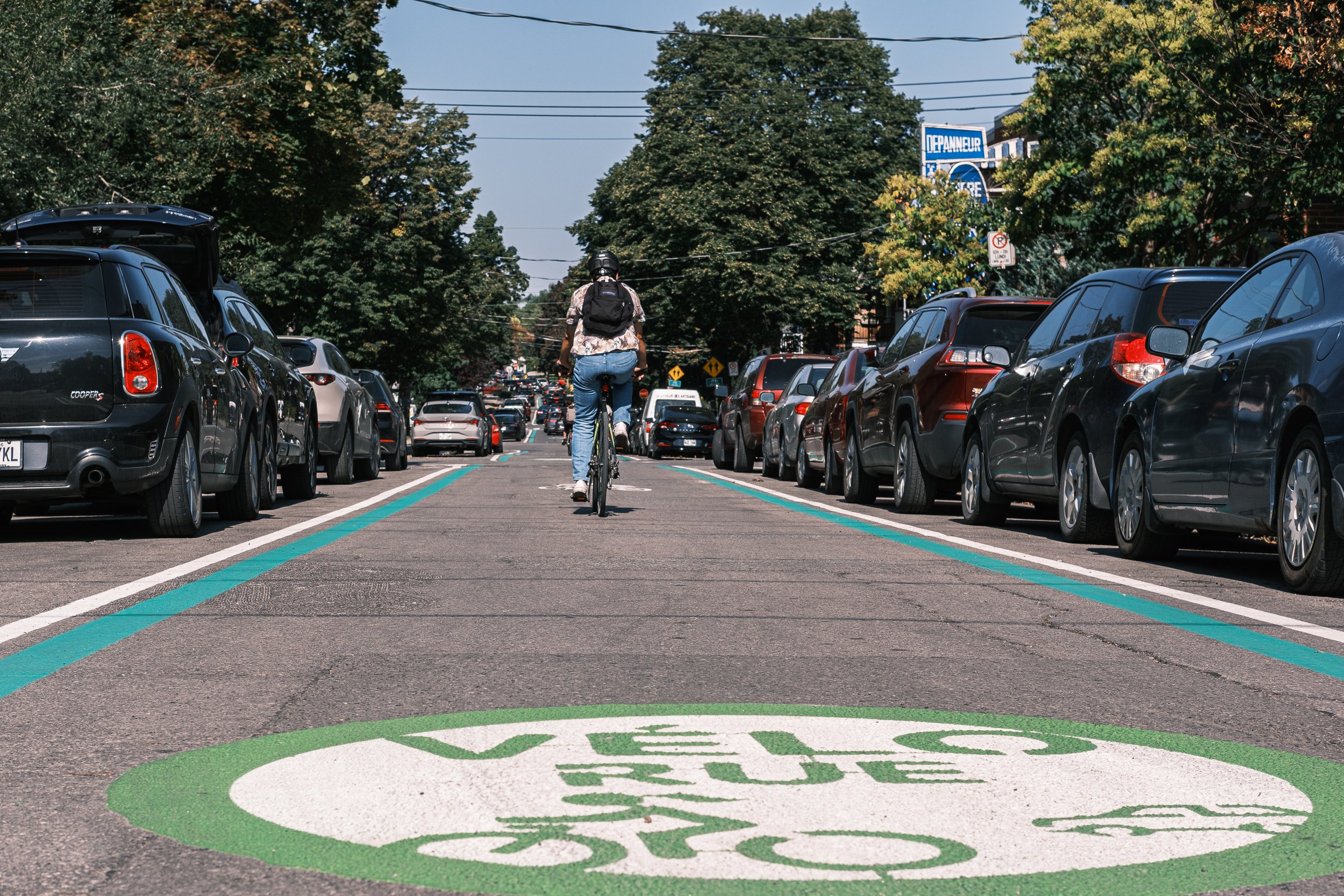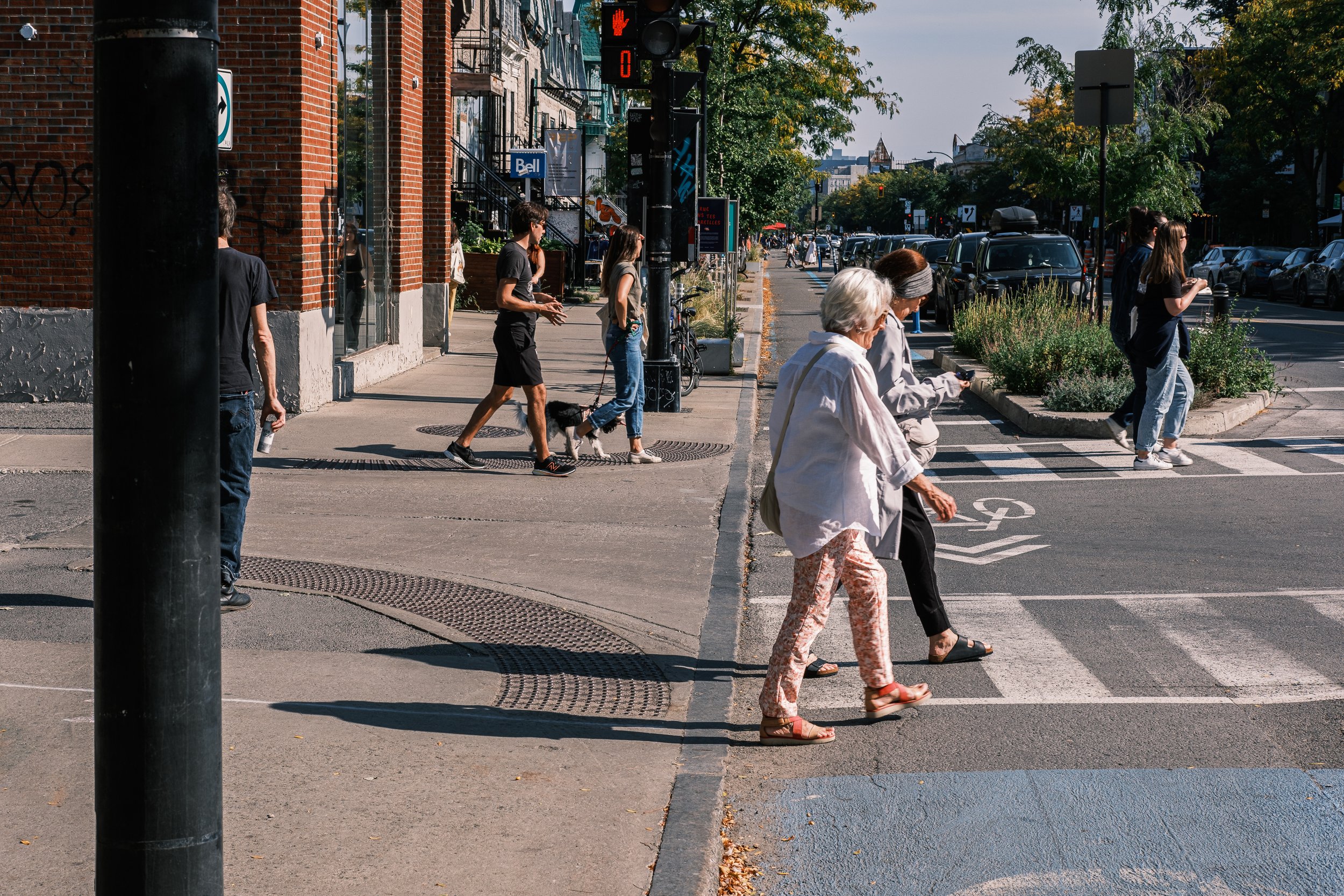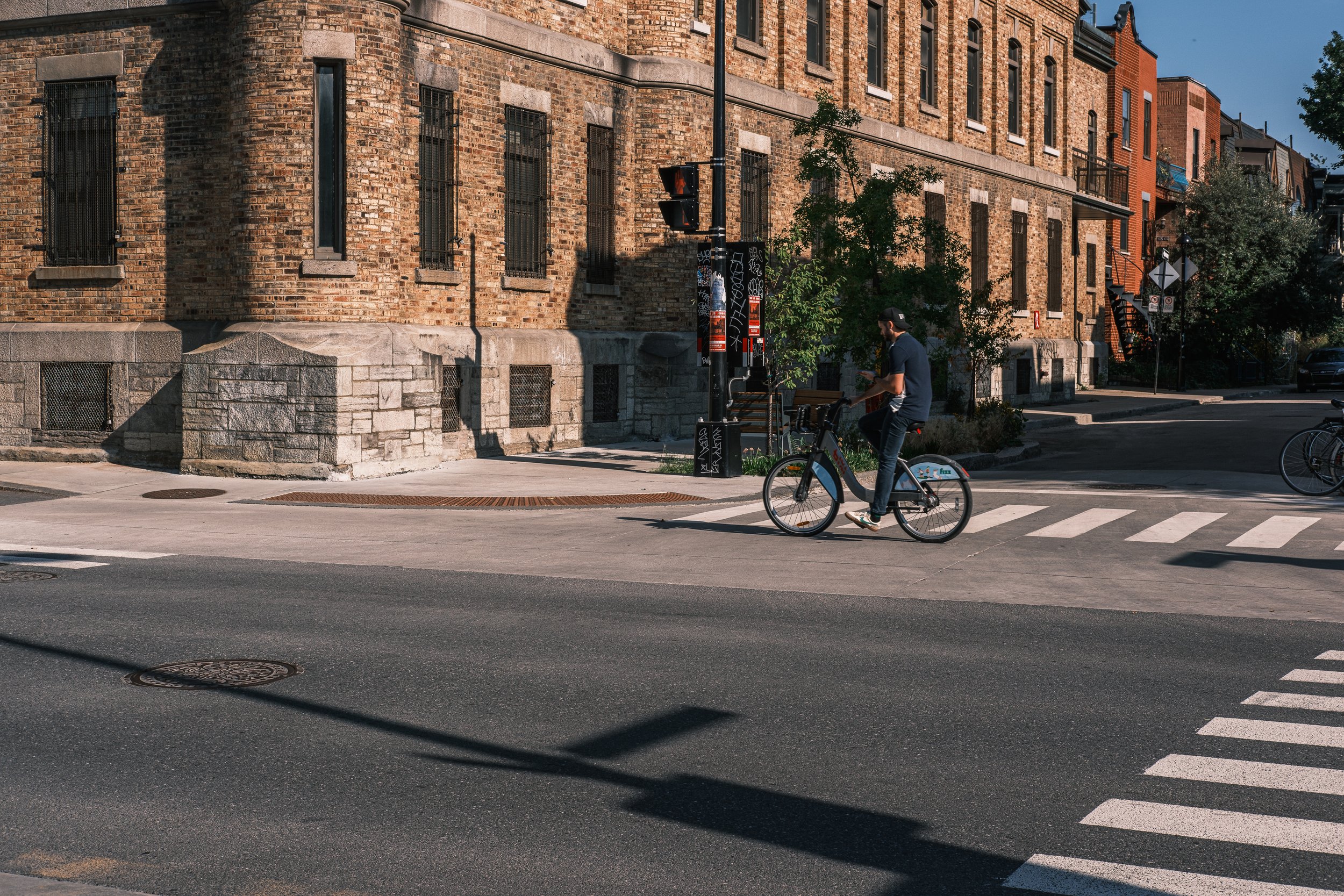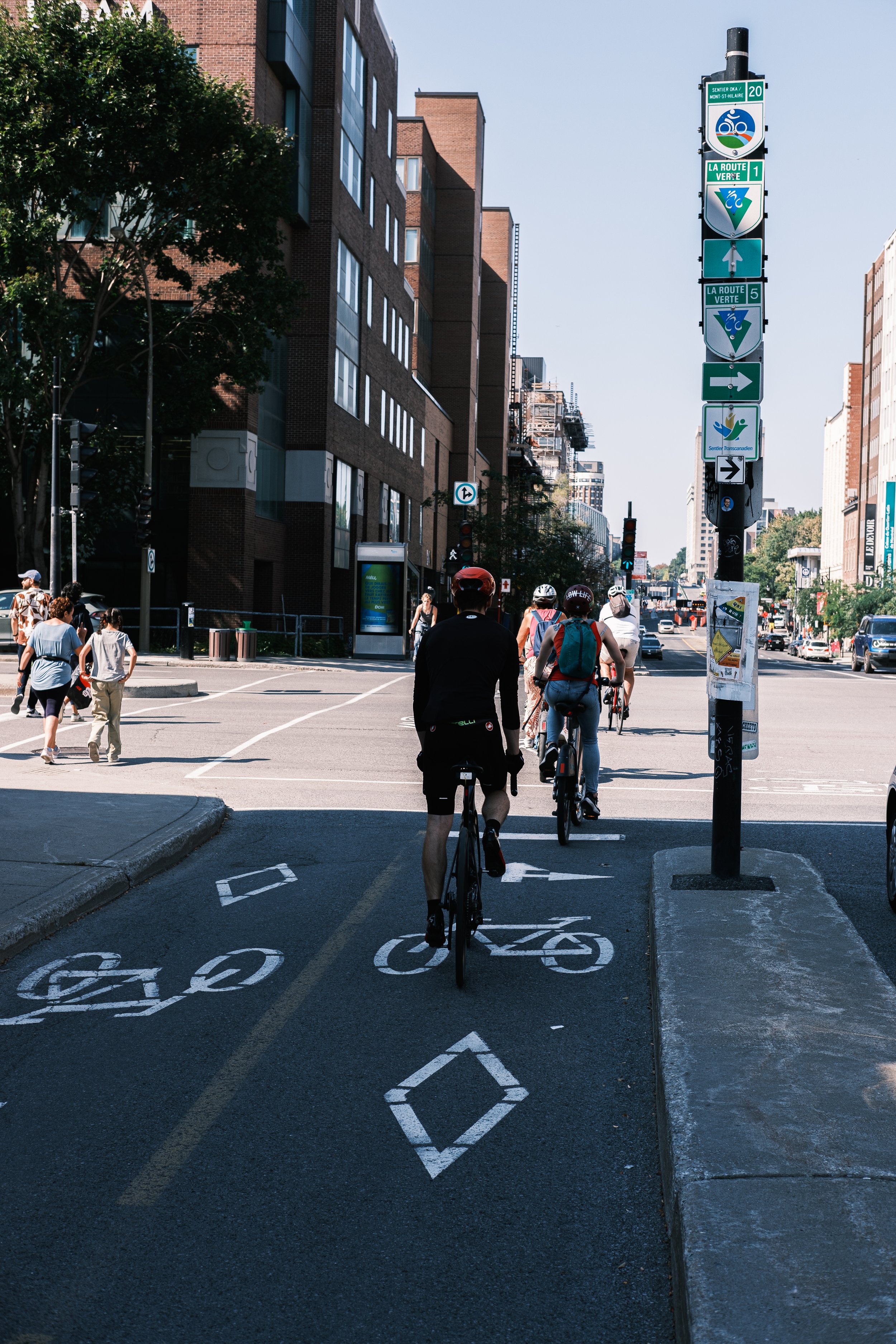Day Tripping with the Brompton to Montreal
Copenhagen style bike lanes, landscaped separation, pedestrian streets, no right-turns-on-red, and an innovative bicycle street amongst other things…
Love all the external staircases
While in Ottawa for the Transportation Association of Canada (TAC) committee meetings and conference, I had a free day on the Sunday and decided I was too close to Montreal not to pay it a visit, especially as I had my bike with me. It would be my first time in Montreal since 2014, so there was for sure new things to explore.
I biked from downtown Ottawa out to the Via Rail station for my first train ride in Canada in the 15 years I’ve been here. Getting a train in Canada seems more like an airport experience, whereas I’d say it’s more like a bus in Europe. You wait in the waiting area, and when it’s time to board someone will check your boarding pass and weigh your luggage before letting you down to the platform where you’ll take your assigned seat. The folding bike in bag rule is adhered to in case you were wondering. I thought it might be one of those rules on paper only, but when I rolled my bike up to the information window, they told me straight away I couldn’t take my bike on the train. I said it’s ok it folds up into its bag. On the train, my bike went in the luggage area and was out of sight for the two hour trip. Luckily it was still there when we arrived.
Brompton in an Ikea Dimpa Bag
The trip wasn’t cheap, it was $265 return, albeit I think it was about $200 if I’d booked further in advance. It’s enough to prevent people doing it on a regular basis. But who knows when I’d be back this way, so I took the opportunity. Interestingly, the Via Rail website shows you how much productive time you have on the train compared with driving and flying, selling the benefit of being able to work while on the train. They don’t compare the cost… it’s expensive, even more so if you were a family or even just a couple travelling. Out of curiosity, I compared it with a similar length trip in the Netherlands. The train from Utrecht to Groningen is also about 160km with a similar travel time, it is €34 ($50 CAD) return on a weekend.
I had about 5-6 hours in Montreal until the last train back to Ottawa, and managed to get around a fair bit of the City. Below are some of the interesting things I came across…
Protected Intersections
Or rather… lack of protected intersections. There are no photos of any as I didn’t see any. This is a curious decision by the City, unless I just didn’t see them in the areas that I visited. The City tends to use turn boxes instead, which in my opinion are less intuitive and less safe for all ages and abilities. Easier to retrofit through if you’re just adding bike lanes and not doing too much at the intersections.
Just turn boxes
Ineffective Catch Basins
I was riding along a street on this hot September day, and there was water running down the street from somewhere, maybe a hose or something. It was running completely along the curb, but critically… not going into the catch basin that is set out slightly from the curb. Seems like a fundamental design flaw. I didn’t stop to take a picture at the time unfortunately, but here’s one that I took later to show what I mean. Someone at TAC suggested it might be utilities under the curb preventing the catch basin being aligned along the curb, which would be an odd place to put them. It seems to be the case on most streets, maybe a legacy thing. If you know… let me know…
How does the water get in there when it’s mostly running along the curb?
Copenhagen Style Protected Bike Lanes
I believe this style of bike lane are the more recent iterations of protected bike lanes in the City. I like the grade separation from the sidewalk, but I’d like to see protected corners and a door zone buffer. Although if I recall, Copenhagen doesn’t really do those either. They also don’t really do protected intersections so maybe similar trains of thought there.
It’s wide, but i’d still like to see the door zone marked off. Not everyone is aware of that danger.
Great to see bike signals at pretty much every intersection, less so the turn boxes.
Landscape Buffered Protected Bike Lanes
I think these lanes are just created through reallocation of space on the existing roadway, and they really contribute to an improved aesthetic on the street. While the grass isn’t likely to stop a wayward car, it sure visually obscures it and makes it seem less of a threat. I’m curious to check the widths and see how narrow they go. It’s much more effective than a simple grass boulevard at creating separation.
Too often we just add grass, maybe a few trees, but the tall grass really adds to the feeling of separation.
More landscaped protected bike lanes or mobility lanes…
Landscaped and Parking Protected Bike Lane
A variation along a more commercial street, keeping the landscaping at the block ends to bookend the parking. Note the blue lines on either side suggesting this route is part of the express bike network. This network provides cycle paths separated from car traffic, accessible year-round to cyclists of all skill levels, provides wide lanes of sufficient width to allow overtaking, is along routes that allow long distances to be crossed in the most direct way possible and connects to existing cycle lanes. Their words, not mine.
Nice D-Lock (or do you call it a U-lock?) technique. I like the person just chilling on the curb up ahead too. Montreal has a lot more people just hanging out on the street than most places in North America it seems.
An example of pavement markings at the start of the Copenhagen style bike lanes on the express bike network.
Bicycle Streets
This is the primary reason I wanted to visit Montreal. They are the first that I know of in North America to impelemnt something more than a neighbourhood bikeway. A Street where people riding bicycles actually have priority, not just a sharrow that suggests this is a good route to use.
It looks like a wide bike lane, more than a car lane that you’re allowed to use
A sign at the start explains this new concept. It translates as:
Do you know that you are on a bicycle street?
The cyclists:
have the right to travel over the entire width of the roadway
can be side by side
are not required to let vehicles pass
Everyone safe, in a shared space!
Learn more about cycle streets
Educational signage about bicycle streets
No Right-Turn-on-Red
I didn’t realize this until I had left, but the no right-turn-on-red is the default in Montreal. I saw signs or signals to say no right turn on red which I was pleased to see. I guess they are just to reinforce the expected behavior.
In this example, there is a separate right turn lane with dedicated signal to separate through bikes and right turning cars.
Mobility Lanes…
We still don’t have a really good catchy word for a micro mobility lane, the Montreal bike lanes of course see use by modes other than bicycles.
Someone skating along a buffered bike lane
For all abilities
Normal People Riding Bicycles
It’s great to see people of all ages and abilities, families, people dressed in normal clothes and importantly fewer helmets. I said similar in the last blog, but when riding a bicycle seems normal and is safe enough to not need special safety equipment, that’s when we get more people on bikes.
Normal people riding bicycles
Pedestrian Streets
I was too late for the city’s open streets, i.e., closed for people driving, open for people walking and rolling. However, there were still quite a few pedestrian streets open while I was there. Great to see more public space prioritized for people over just moving cars. The buildings already made it feel like Europe in many places, the pedestrian streets even more so.
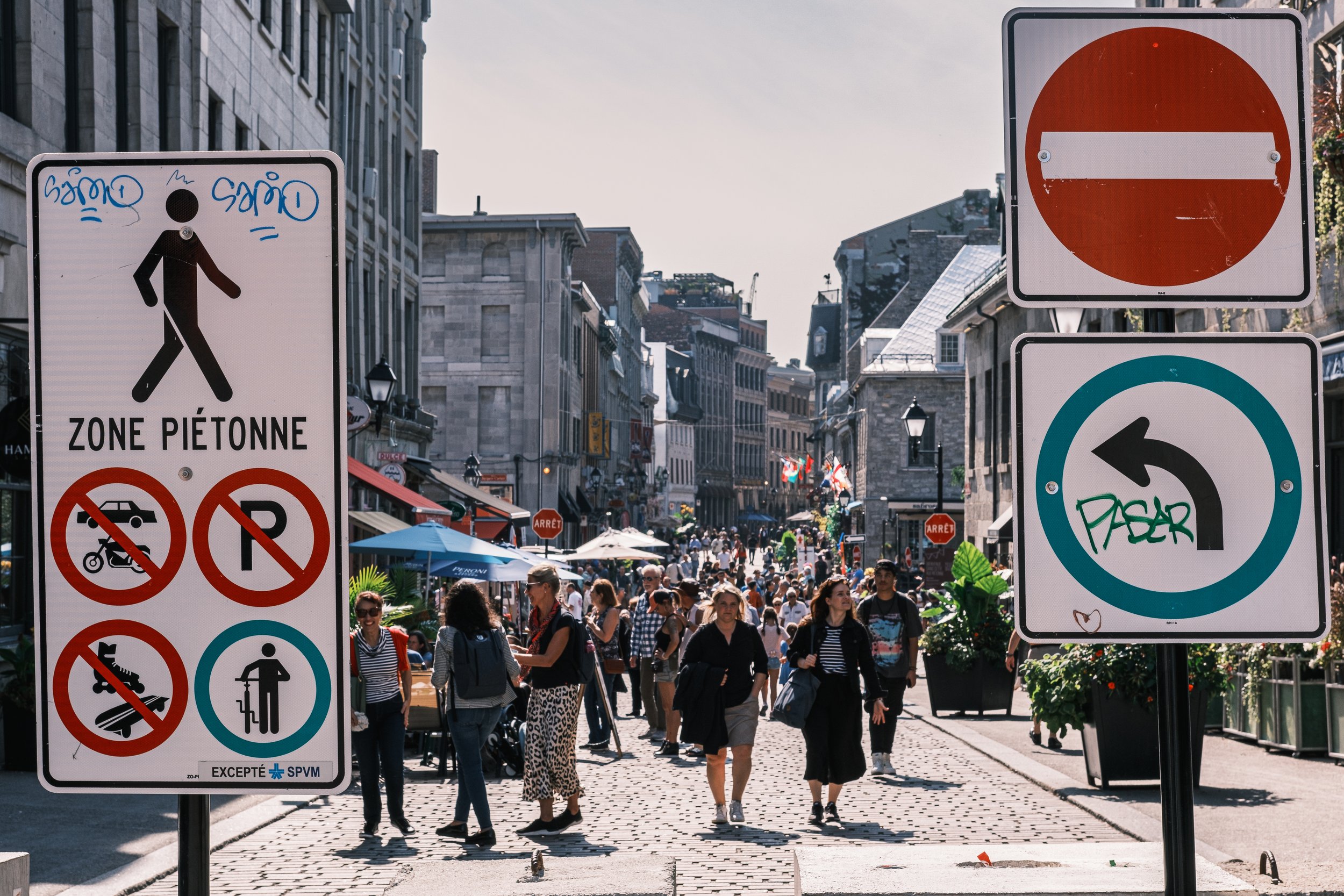
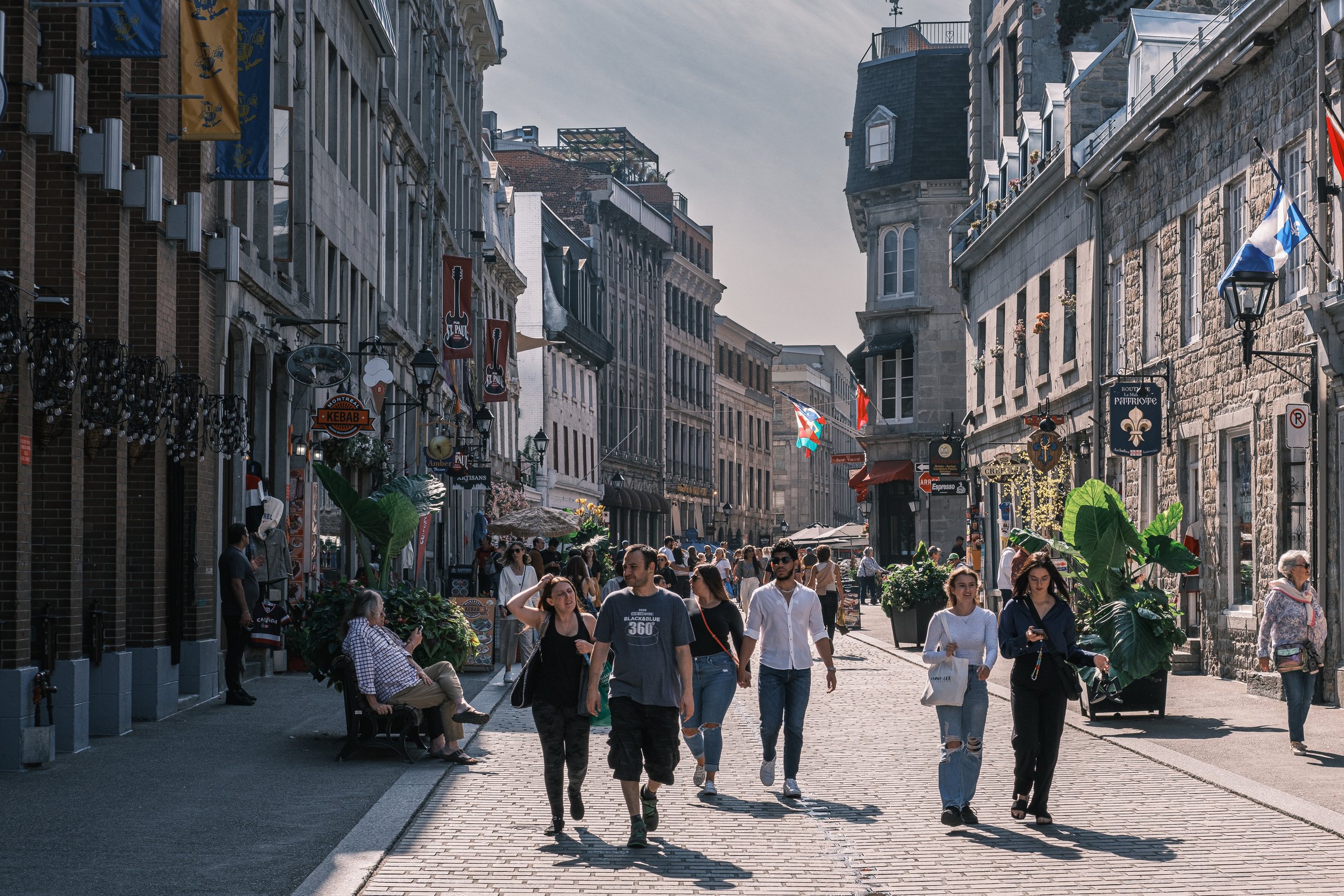
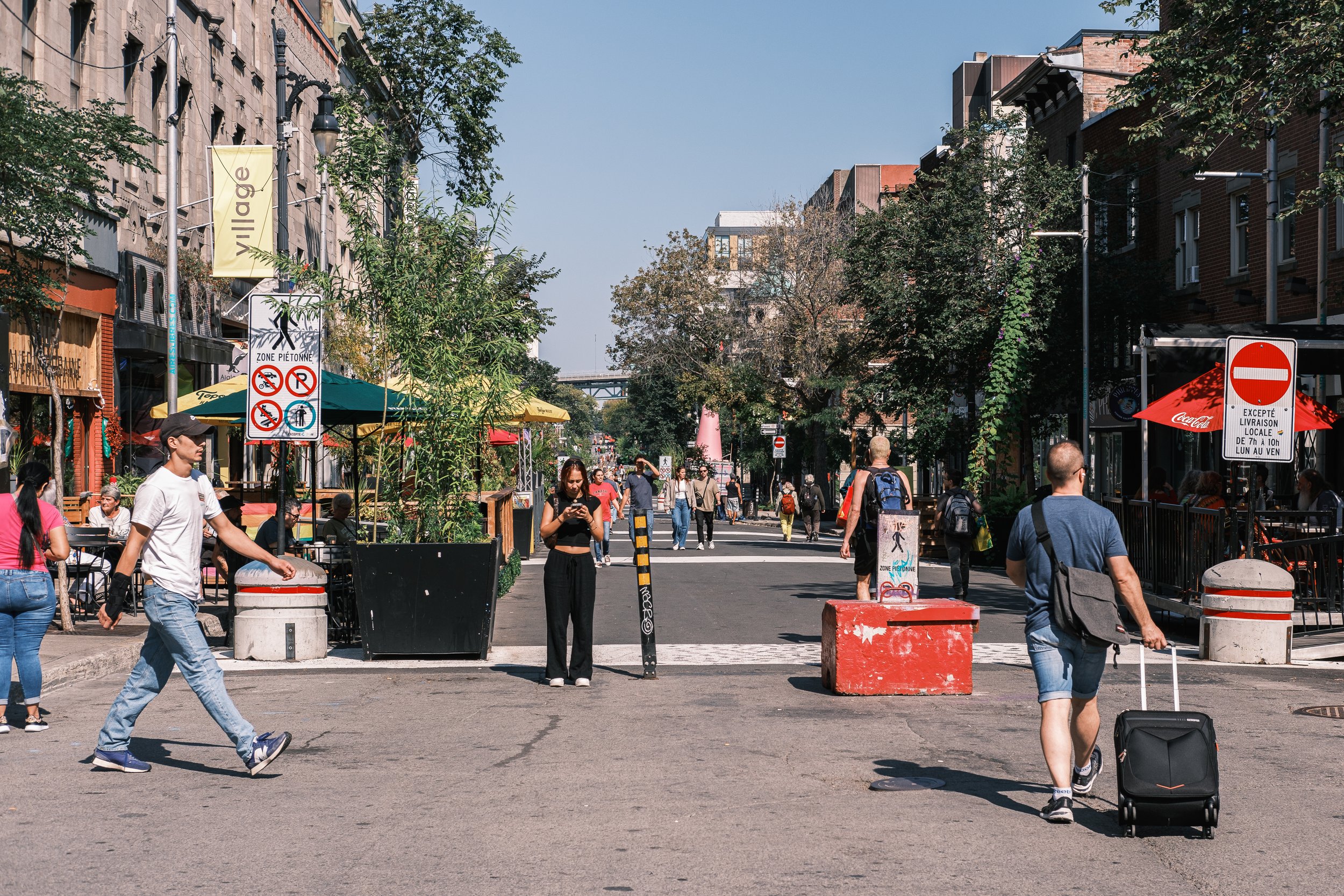
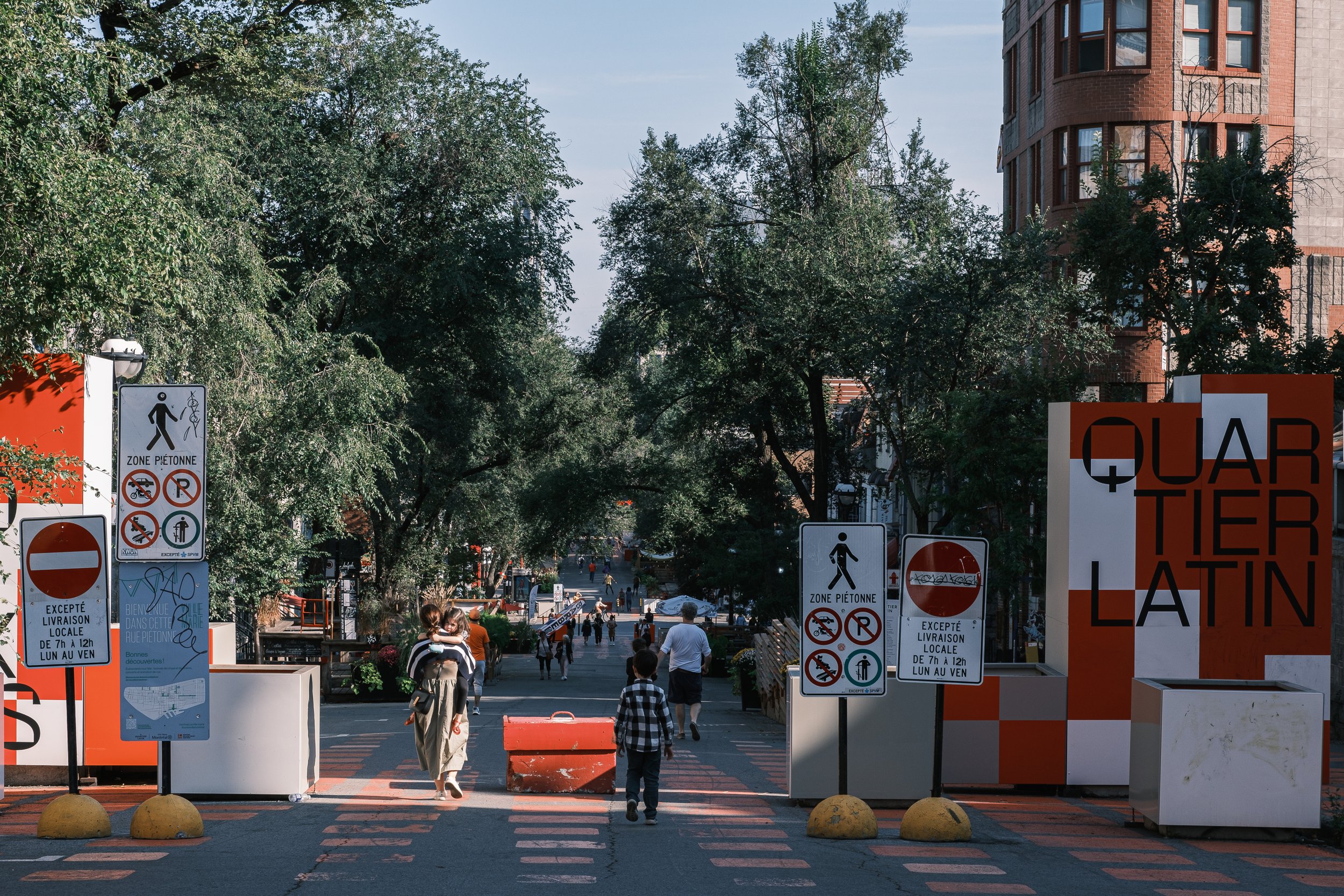
A variety of pedestrian streets.
Vibrant Street Corners
It’s not even just the busy pedestrian streets that have that feeling of vibrancy. It’s great to see such busy streets or street corners across the city.
Business doing well despite the protected bike lanes...
And another… Get out my photo buddy… Oh wait… nice Dutch bike…
A Continuous Sidewalks of Sorts?
This seems to meet many of the criteria at first glance. That’s why I stopped to take a photograph. However, the TWSI’s are on a curve, and it does seem to drop in grade, but I suspect it’s not too perceptible. The one big challenge with the applicability we’ve been working on with TAC is that it has a walk/don’t walk signal, but the design seems to suggest pedestrian priority, so not fulfilling the true intent of a continuous sidewalk.
A continuous sidewalk sending one message… the don’t walk signal an other…
Below is another similar example where I was confused by the design on Ave Des Pins, we have somewhat continuous sidewalks, but crosswalk markings and traffic signals. More a confused sidewalk than continuous sidewalk…
Confusing messaging with the design.
Raised crosswalks or continuous sidewalks and traffic signals usually don’t mix.
The bike lane between intersections was separated by a small landscaped buffer from traffic and a small elevation difference from the sidewalk, with different pavers separating the two facilities. I like this, just could be better at the intersections. Trying to understand the design more I came across some renderings and sections, but i’m none the wiser. I did see there are soil cells under the bike lane to provide soil volume for the trees, a useful technique with such narrow separation.
This looks great.
Bike Share
Nothing really special here, it was available back in 2014 when I was last there. But good to see it going strong and being well used. It contrasts with Ottawa that doesn’t have bike share.
Docked bike share station
Door Zone Bike Lanes
Like many cities, Montreal also has door zone bike lanes, nothing unusual there and hopefully just legacy infrastructure. Just a friendly reminder to remove them at every opportunity, and certainly please don’t build any new ones.
Riding on the edge of the lane, but not everyone is aware of the potential risk of a dooring
Randoms
Not the only one riding around taking photos. I’ve spent so much effort (read money) finding good ways to carry my camera when on the bike and keeping it accessible. Maybe keep it simple… at least when the weather is good.
I saw a social media post that noted… if it doesn’t damage a car, it’s not protection…
Interesting building…
Quite the contrast between the idyllic park and building behind.
What way to go?
Definitely needed the camera on it’s side for this one…
That’s all from Montreal… then it was back on the train to Ottawa… Hope you found the photographs interesting.












